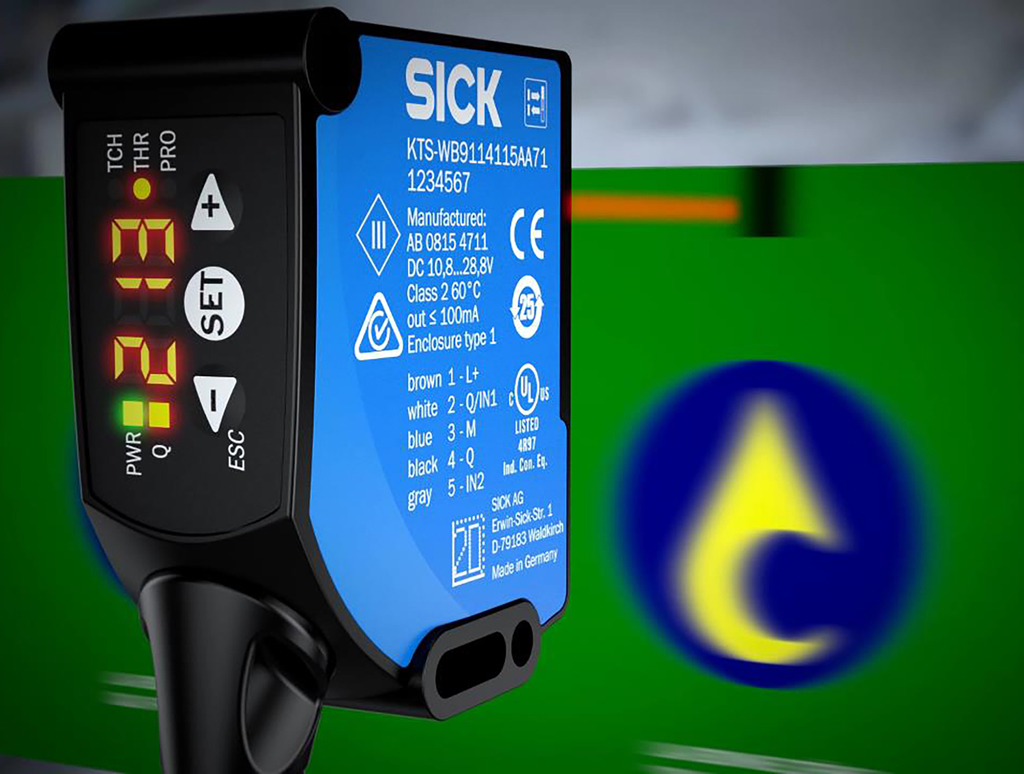

|
Edward Lowton
Editor |


|
Powerful contrast sensors
25 May 2017
SICK has launched the KTS/KTX family of contrast sensors, said to be a powerful next-generation technology that improves reliability, accuracy and versatility for print, labelling, converting and packaging applications.

“SICK’s contrast sensors are the industry standard for detection or registration marks,” says David Hannaby, SICK’s UK product manager for presence detection. “However, that does not mean that we have stayed still. Instead, we have moved on to build even greater speed and accuracy into one of the industry’s best used and loved devices.”
“Customers now have the option of upgrading to the more compact KTS, for a space-saving solution, or to the KTX, which has the same housing size as the KT5 when replacement is the preferred option. One of the biggest advantages of the new technology is its more intuitive set-up to respond to frequent product changeovers. The sensors also cope easily with high-gloss or fluttering materials and there is even the option of incorporating a colour sensing capability without need for an additional device.”
The SICK KTS and KTX family of monochrome and colour contrast sensors improve detection accuracy and switching frequency speed in both sheet- and reel-fed production, even in challenging conditions.
With compact, lightweight housings in rugged ABS, the sensors feature IO-Link data communication and an intuitive on-board display for easy set up and improved diagnostics. The sensors incorporate SICK’s pioneering Twin-Eye Technology for improved contrast detection with better depth of field and a wider sensing distance tolerance. The greater grey-scale sensitivity means even better sensing of monochrome or colour registration marks, even on high gloss packaging.
With a range of “core” and “prime” options in the product range, customers can choose different levels of functionality to suit their needs. With up to 70kHz switching frequency and down to 3µsec jitter rate (a level of performance never previously achieved) the KTS and KTX are easily capable of coping with up to 250 packs per minute and compensating for high-speed flutter on reel-to-reel material edges.
Common applications such as the detection of print marks or the control of industrial labelling processes will benefit immediately from the improved process stability and optimum machine downtime of the new technology. The expanded range of sensor options now presents additional choices for application areas such as the detection of wafers, the management of reel changes and for quality control.
- Safe network integration added to safety laser scanners
- Longer range safety camera sensors
- IO-Link compatibility added to absolute encoders
- SICK launches Industry 4.0 on-premise data intelligence platform
- Virtual lock for secure shipping
- Versatility offered by SICK's ready-made quality control system
- High levels of accuracy
- Compact scanner
- Scanner brings sculpture to life
- For harsh applications
- No related articles listed

















